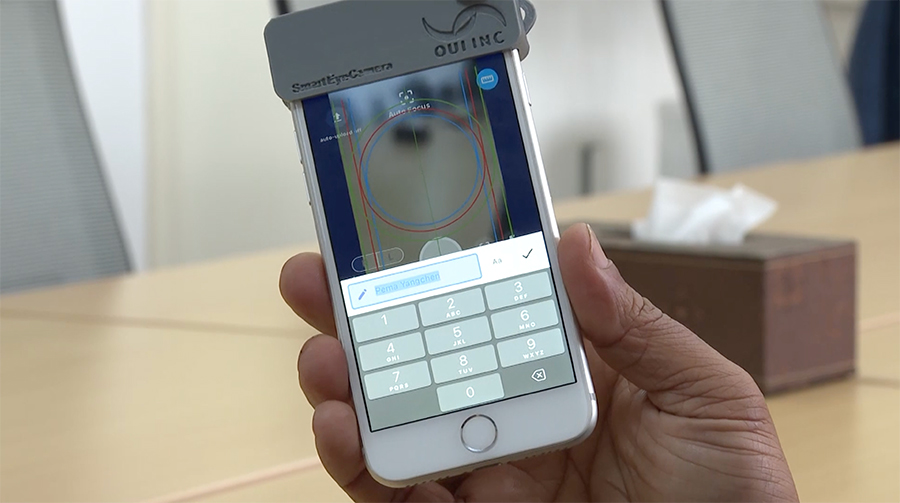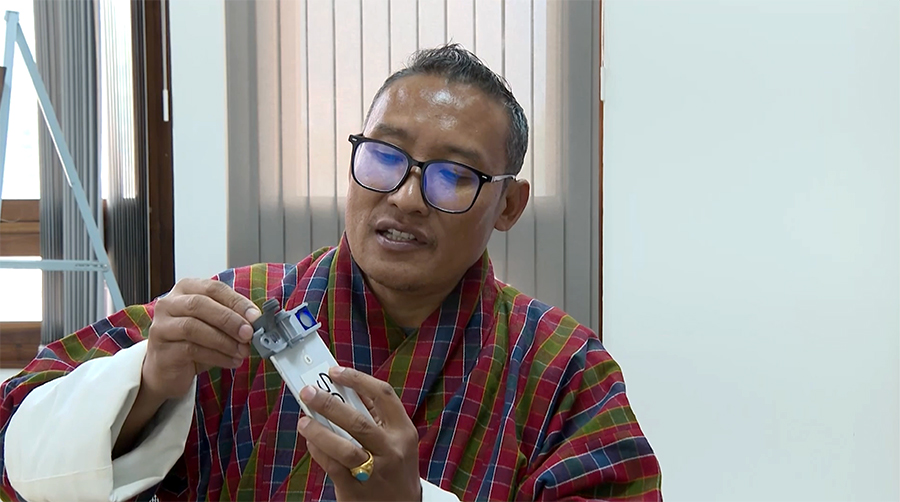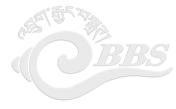 In regions with limited access to eye care professionals, the Smart Eye Camera has become an invaluable tool. Since its launch last year, the device has helped diagnose potential eye diseases in over 1,000 students and teachers across the country. The Smart Eye Camera is a portable ophthalmic medical device that attaches to a smartphone and can be used by anyone, making it easily accessible.
In regions with limited access to eye care professionals, the Smart Eye Camera has become an invaluable tool. Since its launch last year, the device has helped diagnose potential eye diseases in over 1,000 students and teachers across the country. The Smart Eye Camera is a portable ophthalmic medical device that attaches to a smartphone and can be used by anyone, making it easily accessible.
There are currently 25 units of Smart Eye Camera, 20 in Special Educational Needs schools and 5 in Technical Training Institutes. Teachers are using these devices to detect diseases in students, teachers and even parents.
The smartphone-based medical device needs no additional tools and works like a traditional eye examination microscope.
It can detect various eye diseases including cataracts.
 Sonam Tenzin, a teacher at Khuruthang Middle Secondary School in Punakha has been using the Smart Eye Camera for the past year. He says it is simple and easy to operate.
Sonam Tenzin, a teacher at Khuruthang Middle Secondary School in Punakha has been using the Smart Eye Camera for the past year. He says it is simple and easy to operate.
He said, “To examine eyes, we need to attach the slit device to a smartphone. We use the Smart Eye Camera software to enter and save patient information. The software provides options to examine both the left and right eye. A 6 to 7-second video of the eyes is recorded and then uploaded to the cloud via Wi-Fi. The video is sent to a Japanese professional ophthalmologist, and the results are received within 2 to 3 days. Based on the diagnosis, we refer students, teachers, or parents to the hospital for further treatment.”
He said the device has proven to be cost-effective and efficient, especially for people in rural areas.
“The Smart Eye Camera has been extremely beneficial, enabling early detection of potential eye conditions. It remains accessible in rural areas and significantly saves time by eliminating the need for hospital visits. We can conduct examinations during recess hours, and it is cost-effective as it removes the need for travel expenses associated with hospital screenings.”
OUI Incorporated, a Japanese start-up company developed the device to provide diagnosis anytime, anywhere, and by anyone. As part of a project of the Asian Development Bank, the company distributed the devices to schools.
 “We don’t rely on external light sources or replace battery. There is a small hole, where we have positioned the smartphone’s light as the source. When we cover the device, the phone’s light shines through this hole. By adjusting the lens, we can control the magnification. It is a simple design, yet it allows for a clear view of the eye’s condition,” said Shintaro Nakayama, the Chief Operating Officer at OUI Incorporated, Japan.
“We don’t rely on external light sources or replace battery. There is a small hole, where we have positioned the smartphone’s light as the source. When we cover the device, the phone’s light shines through this hole. By adjusting the lens, we can control the magnification. It is a simple design, yet it allows for a clear view of the eye’s condition,” said Shintaro Nakayama, the Chief Operating Officer at OUI Incorporated, Japan.
He also said they plan to expand the technology to provide eye care easily to more people in the future. Their aim is to reduce global blindness by 50 per cent.
“In Japan, we are expanding the usage of the devices to non-ophthalmologists and nurses, or some general practitioners. But what we are doing in Bhutan is very epoch-making because the users of the devices are not healthcare workers. They are school teachers. This is what our devices’ future will be because the number of health care professionals is limited.”
By empowering teachers and non-medical professionals with this device, early detection of eye diseases is possible and helps reduce the burden on healthcare systems.
Sonam Yuden
Edited by Sangay Chezom









